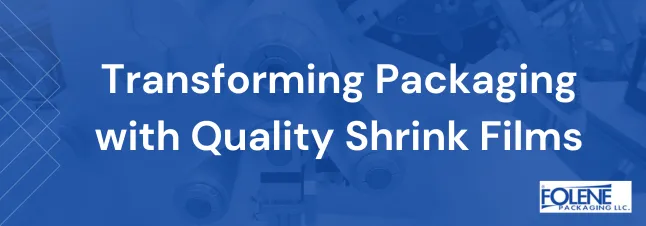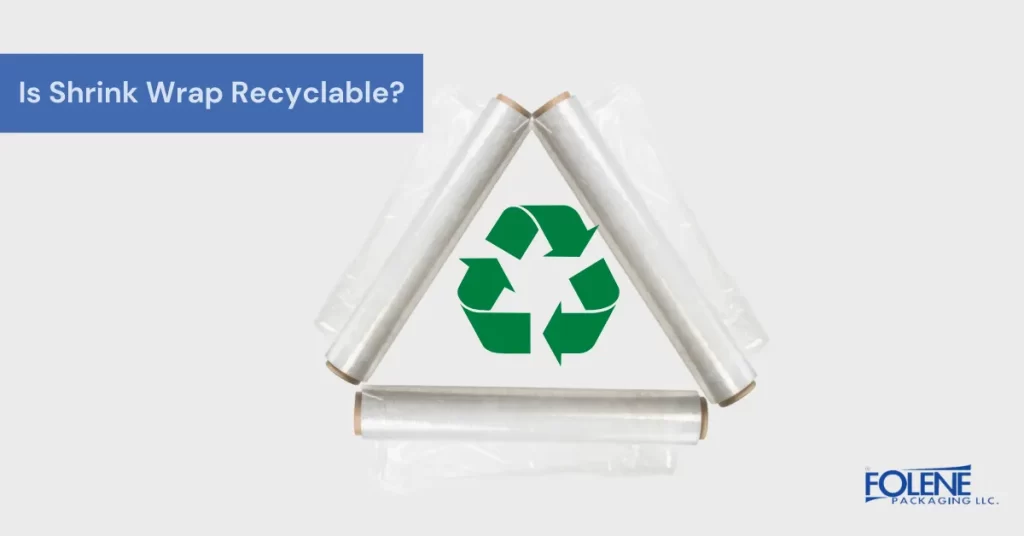
Many manufacturers worry about disposal compliance requirements for packaging materials. Packaging individual products and distribution units is a major part of distribution. Manufacturers feel pressured to meet regulatory requirements and satisfy evolving customer demands about sustainability.
The solution begins with manufacturers knowing:
- Is shrink wrap recyclable?
- Where and how to properly dispose of shrink wrap to ensure recycling success.
Then, manufacturers can begin to comply with legal requirements and employ practical solutions for disposing of shrink wrap.
Is Shrink Wrap Recyclable?
Shrink wrap is categorized as a highly recyclable material. Shrink wrap recycling applies to some types of plastic. First, what is shrink wrap made of?
Of all the types of plastic, only three are used for shrink wrap:
Polyolefin (POF)
Polyolefin is the highest quality shrink-wrap material. It is 100% recyclable and FDA-approved as food-safe.
Polyvinyl chloride (PVC)
PVC is considered challenging to recycle. Folene Packaging does not manufacture PVC shrink products due to sustainability concerns. It is interesting to note that going forward, scientists say PVC has sustainability potential.
Polyethylene (PE)
Polyethylene is 100% recyclable with workarounds. Only 31% of LDPE (low-density polyethylene) is recycled.
So, can shrink wrap be recycled? Yes, but it depends on various factors.
Don’t be confused by hearing that soft plastics, such as plastic bags and shrink film/saran wrap recycling, are not recyclable. They are made of different materials from industrial shrink wrap used in suppliers’ packaging that can be recycled.
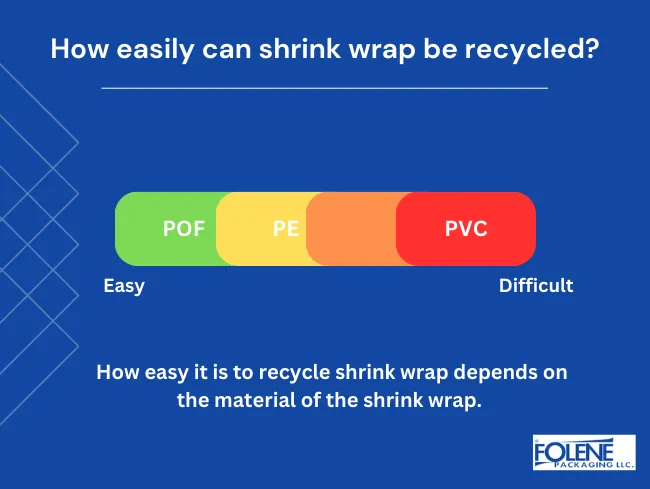
What is Shrink Wrap?
Shrink wrap is a type of plastic film used for packaging and protecting goods during storage and transportation. When it is heated, shrink wrap shrinks to snugly fit around the products, holding them securely until they reach their end destination in excellent condition.
Boat shrink wrap is shrink wrap used as boat covers to protect boats out of season.
What Is Shrink Wrap Used For?
We use shrink wrap to package products of all sizes and secure pallets. It is widely used in various industries, including technology, food and furniture, and medicine.
4 Benefits of Shrink Wrap:
Some types of shrink wrap are 100% recyclable.
Suppliers see it as a cheaper alternative to boxes.
It is a durable and flexible packaging material.
Shrink wrap can showcase printed brand graphic designs.
Why Should You Recycle Shrink Wrap?
We should recycle shrink wrap because recycling plastics from commercial and residential locations could reduce the mass in landfills and oceans. Overall, the quantity of plastics recycling done is relatively small. In 2018 alone, landfills absorbed 27 million tons of plastic, which made up 18.5% of all municipal solid waste (MSW) in landfills.
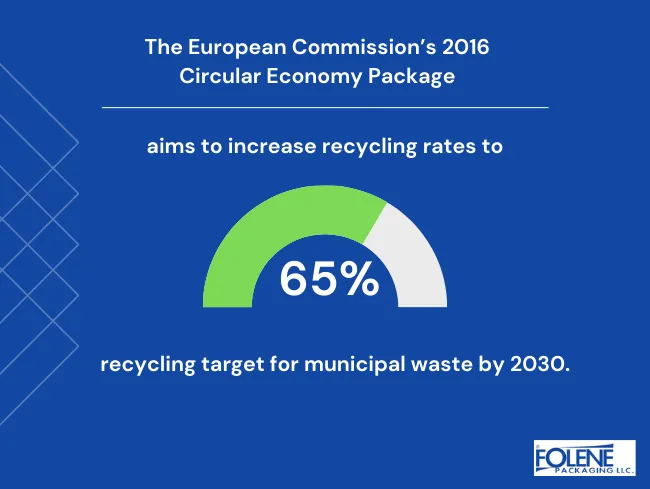
Understanding Shrink Wrap Recycling
In the U.S. in 2021, the recycling rate for plastic waste was just 5-6% for post-consumer use of plastics compared to paper. In 2020, around 66% of paper was recycled. Increasing awareness of shrink wrap recycling has become a goal.
Worryingly, although plastic recycling is apparently declining, the generation of plastic waste has increased steadily – we have generated 263% more plastic waste since 1980.
People ask, “Can you recycle shrink wrap?” in order to learn how we can help to care for the environment.
Shrink Wrap Tips Towards Recycling
Generate a positive attitude to recycling shrink wrap among suppliers. It could also influence consumers to recycle the shrink wrap they dispose of.
Encourage manufacturers to use high durability, high quality, flexible POF shrink materials. That way less packaging material is necessary. By choosing a guaranteed wrap strength, manufacturers can achieve better packaging results with a thinner gauge of film. This would reduce environmental impact by using less plastic, potentially saving thousands of dollars.
Contamination—by packaging tape, labels, or small wooden beams—hinders recycling. Packaging should include explanations to end-users on recycling protocol.
Make it easy for retailers and consumers to separate the recyclable parts of shrink wrap.
3 Ways of Using Recycled Shrink Wrap
Now that we have answered the question, “Is shrink wrap recyclable?” let’s discover some surprising uses for recycled shrink wrap.
From Wrap to Renewable Energy
Technology is teaming with science to turn a problem in a landfill into clean, renewable energy. It is a work in progress. People call LPDE shrink film “sustainable shrinkwrap” which can be converted into renewable, clean energy. According to BoatUS, 654 modern U.S. landfill sites exist that can do this.
From Wrap to Pellets to Wrap
Another way to use shrink wrap in recycling is at the disposal stage when a dedicated pellet-making machine converts the shrink wrap into pellets. The recycled pellets are then either combined with other plastics to produce new shrink wrap, or made of 100% recycled PE shrink wrap. Recycling shrink wrap to make new shrink wrap is common in Europe and the U.S.
From Pellets to Profit
Large shrink wrap end-users have an in-house recycling machine. They can sell any surplus recycled PE pellets at a profit, and recycled PE shrink film can save manufacturers money.
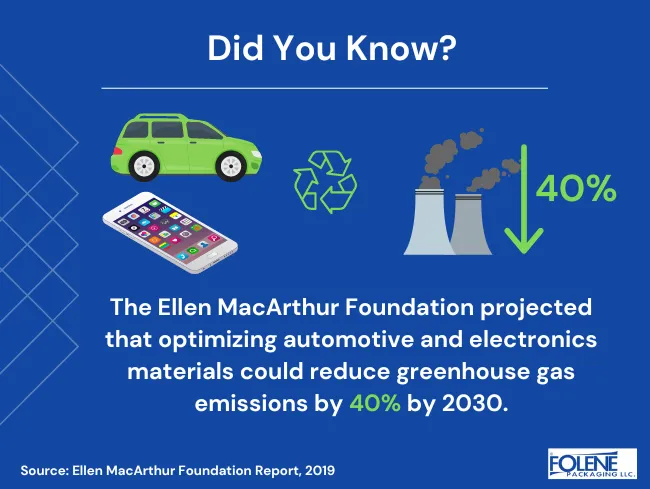
3 Steps to Preparing Shrink Wrap Waste for Recycling
How can we contribute to recycling shrink wrap effectively?
Prepare and store shrink-wrap waste correctly to prevent jamming recycling machinery. Recycling-dumpster contents will only be recycled if it is prepared properly.
Prepare shrink wrap for recycling as follows:
1. Remove shrink-wrap contamination
Remove strapping, stickers, labels, tape, ropes, wooden supports, nails, or other items made of different materials. This applies to boat shrink wrap, especially since it has vents and even doors. If necessary, cut up packaging, leaving a pile of ‘pure’ shrink material.
2. Cleanliness from other matter
Keep the shrink-wrap as clean as possible, free from oil, chemicals, gravel, and sand. Ensure a clean storage area.
3. Package it correctly
Roll or bag the shrink wrap, depending on your recycling program’s requirements. Shrink wrap can be “baled” on the premises or collected, baled, and processed elsewhere. Tie it up with a strip of shrink-wrap material, not rope.
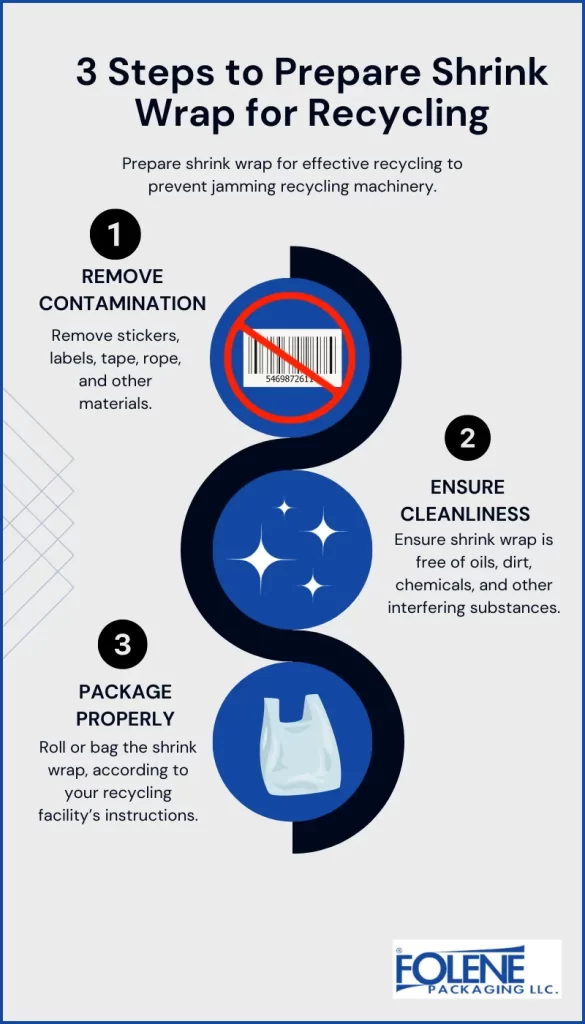
Partner with a waste and recycling provider to recycle shrink-wrap
Partnering with a waste and recycling provider can help businesses develop a sustainable recycling plan. Working together to recycle shrink wrap helps us move towards a circular economy.
The waste management industry offers shrink wrap recycling services either as pick up or at a drop-off location.
Check whether your state does offer recycling services and whether they are government-subsidized.
How Folene Packaging Can Help You Make Better Sustainable Choices with Flxtite® and Ecolene®
Ecolene® is a biodegradable plastic wrap alternative. It is one of the top biodegradable polyolefin shrink films in Folene Packaging’s broad range of customizable, high-gloss shrink films. While Ecolene® is fully biodegradable, it retains the same performance properties as regular polyolefin. Folene Packaging also offers Flxtite® – a full line of irradiated and non-irradiated polyolefin shrink films. All non-irradiated Flxtite® films are fully recyclable.
Using recyclable or biodegradable shrink films such as Flxtite® AP-1 non-irradiated shrink film or Ecolene® encourages a growing culture of sustainability. Recyclable shrink wrap helps manufacturers dispose of shrink film waste more easily. We can all reduce the environmental impact of shrink wrap waste.
Is Shrink Film Recyclable? FAQs
Is polyolefin shrink film recyclable?
It depends on how the film was treated. Non-irradiated polyolefin shrink films, like Flxtite® AP-1, are fully recyclable.
Is PVC shrink film recyclable?
PVC shrink film is considered less recyclable because of its complex chemical makeup and because different types of plastic are combined. However, some organizations are researching ways to fully recycle PVC, too.
Is pallet wrap recyclable?
If the pallet wrap is made from a recyclable material, such as POF or PE, then it can be recycled. It is crucial to properly prepare the wrap for recycling, following the steps outlined above.
